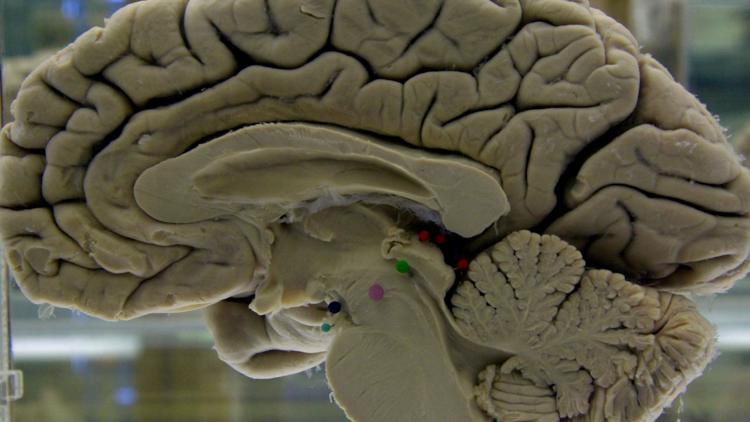Share this @internewscast.com

Recent research has revealed that the human brain undergoes five distinct structural phases throughout a person’s life.
CAMBRIDGE, UK — Contrary to the common belief that the human brain merely expands and then deteriorates, it actually transitions through five unique structural stages across a lifetime. These stages are punctuated by four pivotal turning points occurring at the ages of 9, 32, 66, and 83. This groundbreaking study was published this week in the journal Nature Communications.
Researchers from the University of Cambridge conducted an analysis of brain scans from 3,802 individuals, ranging in age from newborns to 90-year-olds. This marks the first time that scientists have mapped out the major phases of brain development throughout the entire span of human life.
The study presents a new perspective on brain maturity, revealing that adolescent brain development extends until around age 32, much later than previously assumed. Dr. Alexa Mousley, a Gates Cambridge Scholar who spearheaded the research, highlighted this significant finding.
“While we understand that the brain’s wiring plays a vital role in our development, we have lacked a comprehensive view of how and why it evolves throughout our lives,” Mousley explained in a statement released by the university.
Duncan Astle, a senior author of the study and a professor of neuroinformatics at Cambridge, added, “Reflecting on our lives, many of us recognize distinct phases. It turns out that our brains experience these phases as well.”
The five ‘eras’ of brain development
“Looking back, many of us feel our lives have been characterized by different phases. It turns out that brains also go through these eras,” said Duncan Astle, a senior author on the study and professor of neuroinformatics at Cambridge.
The research team used MRI diffusion scans, which track water molecule movement through brain tissue to map neural connections. They identified five broad eras:
Childhood (birth to age 9): The brain undergoes rapid development as neural connections consolidate. Grey and white matter grow quickly in volume, cortical thickness reaches its peak, and the characteristic ridges on the outer brain stabilize. By age 9, children experience significant cognitive capacity changes and face increased vulnerability to mental health disorders.
Adolescence (ages 9 to 32): This era represents the only period in life when neural efficiency actively increases. White matter continues growing in volume, refining the organization of the brain’s communication networks. Connections within specific brain regions and across the entire brain become more efficient, supporting enhanced cognitive performance.
The transition at age 32 marks what researchers call the strongest structural shift of a person’s entire life. Around age 32, the brain shows the most directional changes in wiring and the largest overall shift in trajectory compared to other turning points, Mousley said.
Adulthood (ages 32 to 66): Brain architecture stabilizes during this longest era, which spans more than three decades without major structural changes. This period corresponds with a plateau in intelligence and personality, the researchers noted, citing other studies. Brain regions gradually become more compartmentalized during these years.
Early aging (ages 66 to 83): The shift at age 66 is more subtle than earlier transitions. Brain networks gradually reorganize as white matter begins to degenerate, reducing connectivity. Mousley noted this age coincides with increased risk for health conditions that affect the brain, including hypertension.
Late aging (age 83 onward): The final phase sees whole-brain connectivity decline further. The defining feature is a shift from global to local processing, with increased reliance on certain brain regions. The researchers cautioned that data remains limited for this era.
Understanding these distinct phases could help scientists identify when brains are most vulnerable to disruption and why certain conditions emerge at specific life stages, according to Prof. Duncan Astle, professor of neuroinformatics at Cambridge and the study’s senior author.
“Many neurodevelopmental, mental health and neurological conditions are linked to the way the brain is wired,” Astle said. Brain wiring differences predict difficulties with attention, language, memory and various behaviors.
The research could provide context for understanding learning difficulties in childhood and dementia in later years, Mousley said.
















